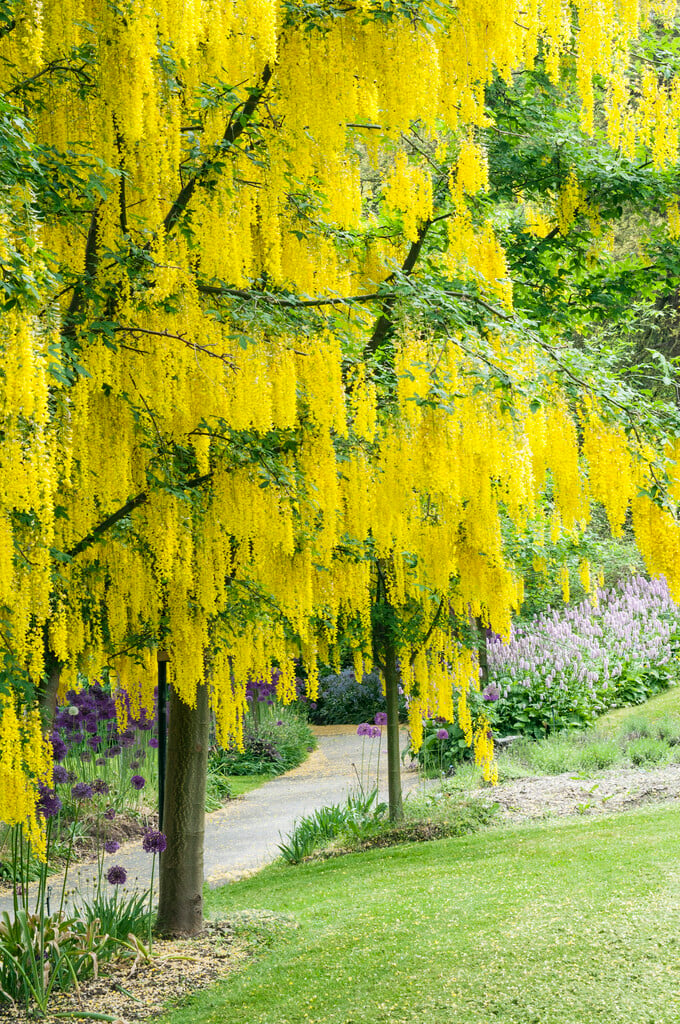Not the plant you're looking for? Search over 300,000 plants
Trees
Size
Ultimate height
4–8 metresTime to ultimate height
20–50 yearsUltimate spread
4–8 metresGrowing conditions
Chalk
Clay
Loam
Sand
Moisture
°Â±đ±ô±ô–d°ů˛ąľ±˛Ô±đ»ĺpH
Acid, Alkaline, NeutralColour & scent
| Stem | Flower | Foliage | Fruit | |
| Spring | Yellow | Green | ||
|---|---|---|---|---|
| Summer | Green | |||
| Autumn | Green | Green | ||
| Winter |
Position
- Full sun
Aspect
North–facing or West–facing or South–facing or ·ˇ˛ą˛őłŮ–f˛ął¦ľ±˛Ô˛µ
Exposure
Exposed or Sheltered Hardiness
H6Botanical details
- Family
- Fabaceae
- Native to GB / Ireland
- No
- Foliage
- Deciduous
- Habit
- Bushy
- Potentially harmful
- Harmful if eaten. Wear gloves and other protective equipment when handling Pest: Harmful if eaten (dogs, rabbits, rodents). For further information and contact numbers regarding pets, see the HTA guide to potentially harmful plants
- Genus
Laburnum are small deciduous trees with leaves composed of three leaflets, and bright yellow pea-shaped flowers in pendent racemes
- Name status
Accepted
How to grow
Cultivation
Good as specimen tree for a sunny position with a well-drained soil
Propagation
Propagate by grafting
Suggested planting locations and garden types
- Coastal
- Low Maintenance
Pruning
Pests
May be susceptible to aphids, leaf-mining moths, leaf-mining flies and snails
Diseases
May be susceptible to powdery mildews, silver leaf and honey fungus
Laburnum Ă— watereri 'Vossii'
Voss's laburnum
at the 911±¬ÁĎ plant Shop
911±¬ÁĎ
911±¬ÁĎ is the UK’s leading gardening charity. We aim to enrich everyone’s life through plants, and make the UK a greener and more beautiful place.
